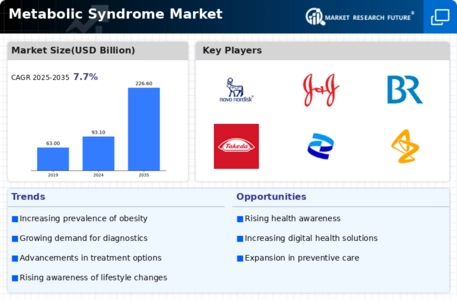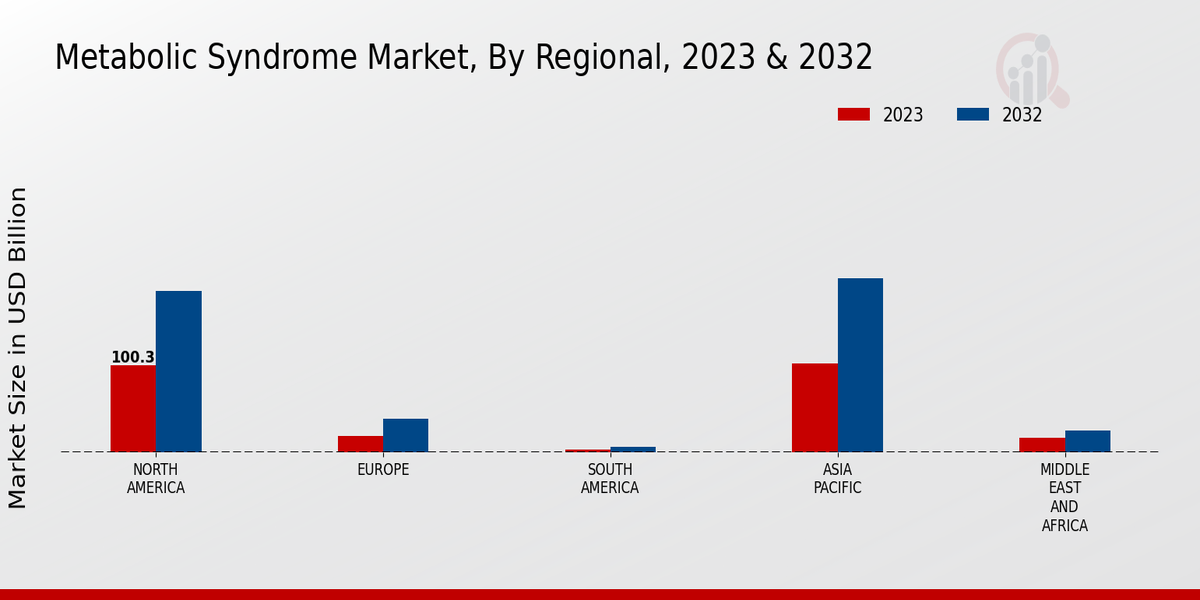Market Growth Projections
The Global Metabolic Syndrome Market Industry is projected to experience substantial growth over the coming years. By 2035, the market is expected to reach 226.6 USD Billion, reflecting a significant increase in demand for diagnostic and therapeutic solutions. This growth trajectory is indicative of the escalating prevalence of metabolic disorders and the corresponding need for effective management strategies. The anticipated compound annual growth rate of 8.43% from 2025 to 2035 further underscores the market's potential, highlighting the importance of ongoing research and development in this critical area.
Advancements in Treatment Modalities
Innovations in treatment modalities for metabolic syndrome are contributing to the expansion of the Global Metabolic Syndrome Market Industry. The development of new pharmacological agents, lifestyle modification programs, and technological solutions such as telemedicine and mobile health applications are enhancing patient management. These advancements not only improve patient outcomes but also increase the accessibility of care. As a result, the market is anticipated to experience a compound annual growth rate of 8.43% from 2025 to 2035, indicating a robust demand for diverse treatment options.
Aging Population and Lifestyle Changes
The aging population coupled with lifestyle changes is a significant factor driving the Global Metabolic Syndrome Market Industry. As individuals age, the risk of developing metabolic syndrome increases, particularly due to factors such as sedentary lifestyles and poor dietary habits. The World Health Organization reports that the global population aged 60 years and older is expected to double by 2050, leading to a higher prevalence of metabolic disorders. This demographic shift underscores the need for targeted interventions and healthcare services, further propelling market growth.
Rising Prevalence of Metabolic Disorders
The increasing incidence of metabolic disorders globally is a primary driver for the Global Metabolic Syndrome Market Industry. According to health statistics, the prevalence of conditions such as obesity, diabetes, and hypertension is on the rise, with estimates suggesting that over 1.5 billion adults are affected. This alarming trend necessitates effective management strategies and interventions, thereby propelling market growth. The Global Metabolic Syndrome Market is projected to reach 93.1 USD Billion in 2024, reflecting the urgent need for healthcare solutions addressing these interconnected health issues.
Government Initiatives and Policy Support
Government initiatives and policy support aimed at combating metabolic syndrome are playing a crucial role in shaping the Global Metabolic Syndrome Market Industry. Various countries are implementing health policies that promote healthier lifestyles and preventive care. For example, subsidies for healthy food options and funding for public health campaigns are becoming more common. These initiatives not only raise awareness but also facilitate access to necessary healthcare services, thereby fostering market growth. As the market evolves, such supportive measures are likely to enhance the overall effectiveness of interventions.
Growing Awareness and Screening Initiatives
Heightened awareness regarding metabolic syndrome and its associated risks is significantly influencing the Global Metabolic Syndrome Market Industry. Public health campaigns and educational initiatives are increasingly emphasizing the importance of early detection and management of metabolic disorders. For instance, organizations are promoting routine screenings for blood pressure, cholesterol levels, and glucose levels, which could lead to earlier interventions. This proactive approach is expected to drive market growth, as more individuals seek diagnostic and therapeutic options to manage their health effectively.






















Leave a Comment